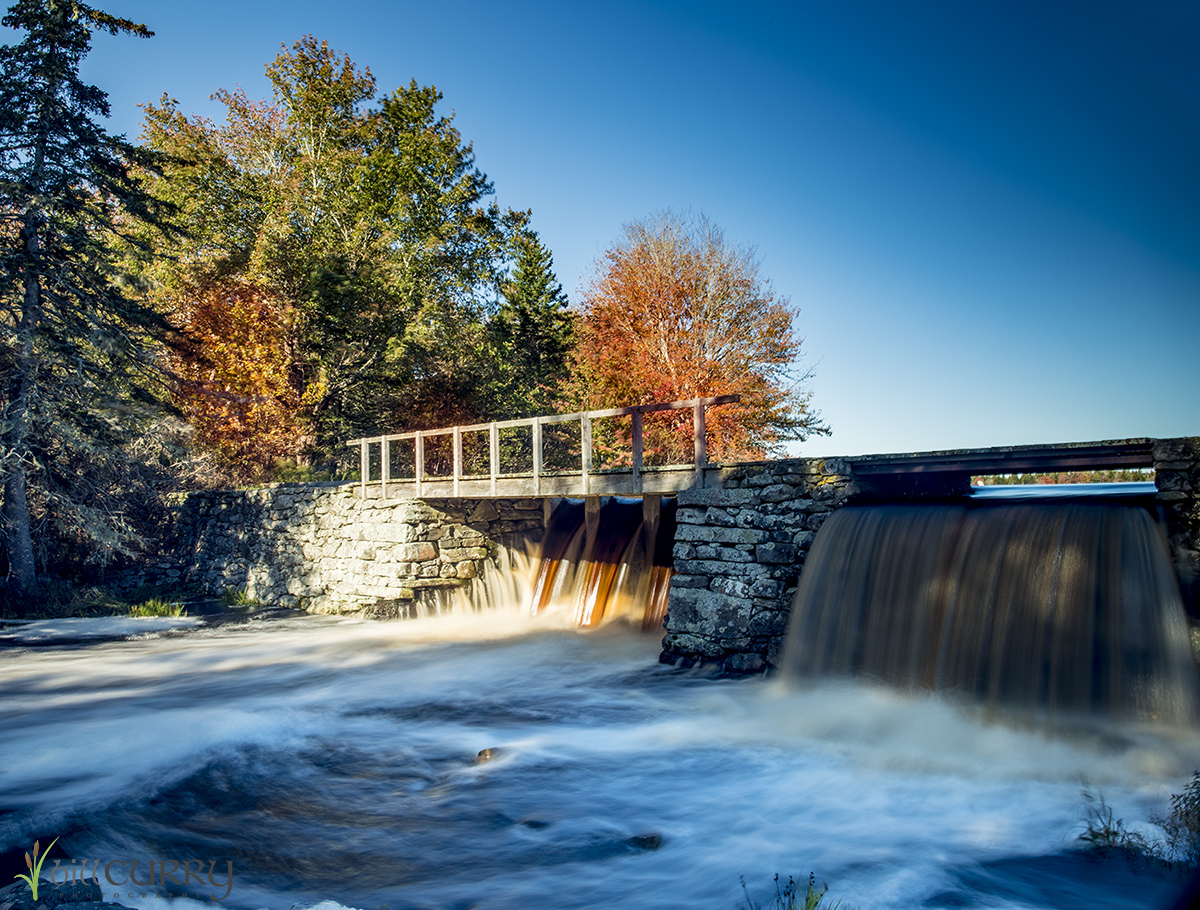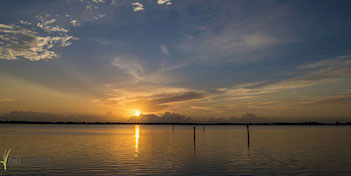
Gardiner's Mill, Yarmouth County, NS
On Photographing Moving Water
Many beginning photographers, and even some more advanced wanna-bes, don't understand the importance of the selection of aperture and shutter speed on an image. There are myriad combinations of f-stop and shutter speed, all of which will yield the same exposure, but that doesn't mean they'll make the same image. The light and dark will be the same, but the images will be very, very different. Nowhere is this more evident than when shooting moving water.
Look at the two images below. The first was taken with a shutter and aperture combination a camera, left on auto or program mode might select for this scene. It was taken at f4 and at 1/640 of a second. Note how the water is almost frozen in stop action, and the leaves in the trees (it was breezy) are sharp and detailed. But suppose I wanted the impression of moving water and was fine with allowing the trees to move a bit even if this blurred the foliage a tad? The second image is that image and was shot at f16 and a shutter speed of 1.3 seconds - a very long exposure. Otherwise the images were processed the same, and made to be as similar as possible. This shows the impact of shutter speed and aperture selection by the photographer to create what they want the veiwer to see.
Neither image is the "right" one, some folks will look at one and like it better than the other, some will like the other - but it's what the photographer wants to show that's what should be the deciding factor.
Next time you're out shooting water or other objects that move, like clouds or the ocean, why not try a long exposure? You might like it - and you'll be on your way to making images that show what you wanted folks to see.
Fast - f4 at 1/640 of a second

Slow - f16 at 1.3 seconds
























